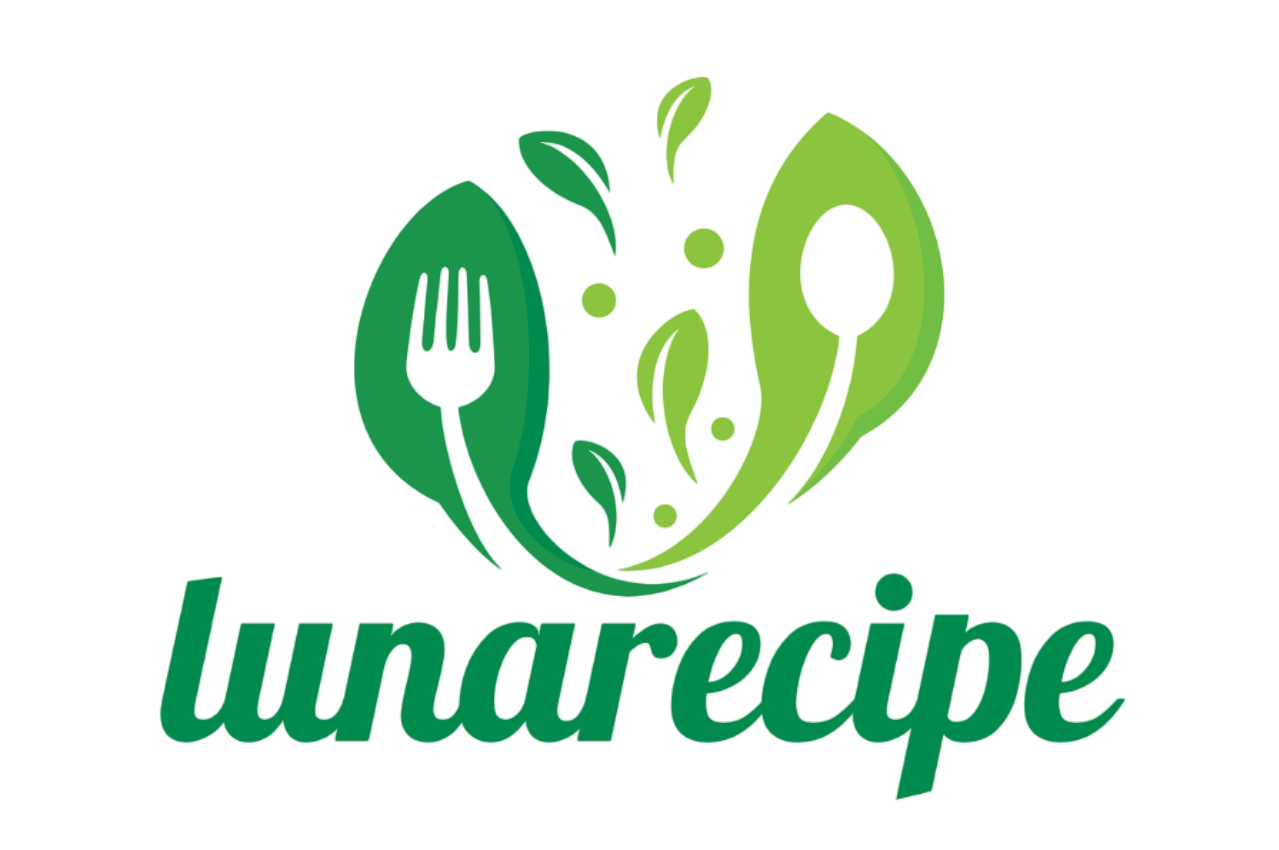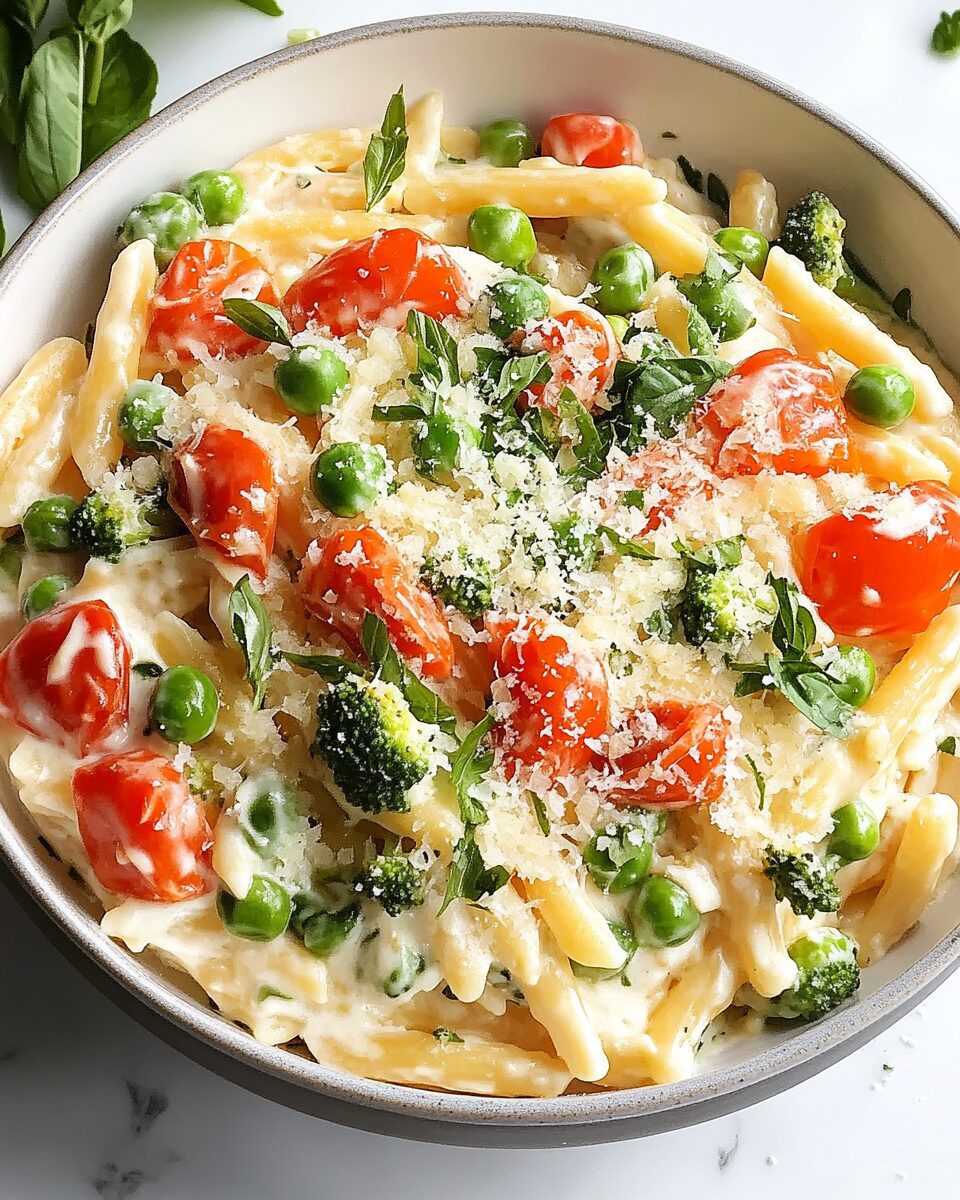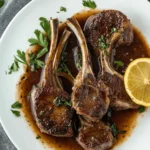The vibrant colors and crisp textures of spring and summer vegetables make Pasta Primavera a feast for the senses. The slight crunch of the sautéed veggies paired with the tender pasta, all tossed in a simple garlic and olive oil sauce, creates a dish that’s light yet satisfying.
Perfect for busy weeknights or leisurely weekends, this Pasta Primavera brings the freshness of the season right to your table. It’s highly customizable too—use whatever fresh produce you have on hand, and enjoy a wholesome, hearty meal that’s as beautiful as it is delicious.
Full Recipe:
-
12 oz pasta (fettuccine or penne)
-
2 tablespoons olive oil
-
1 red bell pepper, sliced
-
1 yellow bell pepper, sliced
-
1 zucchini, sliced
-
1 cup broccoli florets
-
1 cup cherry tomatoes, halved
-
3 cloves garlic, minced
-
1/2 cup Parmesan cheese, grated
-
1/4 cup fresh basil, chopped
-
1/4 teaspoon red pepper flakes (optional)
-
Salt and pepper to taste
-
Juice of 1 lemon
Directions:
-
Bring a large pot of salted water to a boil. Cook pasta according to package directions until al dente. Drain, reserving 1/2 cup of the pasta water.
-
Meanwhile, heat olive oil in a large skillet over medium heat.
-
Add garlic and sauté for 1 minute until fragrant.
-
Add broccoli, red bell pepper, yellow bell pepper, and zucchini. Sauté for about 5-7 minutes until tender but still crisp.
-
Add cherry tomatoes and cook for an additional 2 minutes.
-
Toss the cooked pasta into the skillet with the vegetables.
-
Add reserved pasta water as needed to loosen the sauce.
-
Stir in Parmesan cheese, fresh basil, lemon juice, and red pepper flakes (if using).
-
Season with salt and pepper to taste.
-
Serve immediately with extra Parmesan if desired.
Prep Time: 15 minutes | Cooking Time: 20 minutes | Total Time: 35 minutes
Kcal: 430 kcal | Servings: 4 servings
Introduction to Pasta Primavera
Pasta Primavera is a celebration of freshness, color, and simplicity. Originally popularized in the 1970s, this dish has remained a classic because it brilliantly combines al dente pasta with a vibrant assortment of seasonal vegetables. The name “Primavera” translates to “spring” in Italian, but this dish can be enjoyed year-round by using whatever fresh produce is available. It’s the perfect embodiment of light, wholesome eating without sacrificing flavor or satisfaction. Ideal for weeknight dinners or special gatherings, Pasta Primavera captures the best of the garden in every bite.
The Origin Story of Pasta Primavera
Although it sounds thoroughly Italian, Pasta Primavera actually has North American roots. It was first introduced at Le Cirque, a renowned New York City restaurant, by Sirio Maccioni and his team. Legend has it that the dish was created somewhat accidentally when a group of chefs were trying to put together a lighter meal during a trip to Canada. The combination of lightly sautéed vegetables tossed with pasta and finished with a sprinkle of Parmesan was an immediate success. It made its formal debut at Le Cirque, quickly gaining fame and cementing its place in culinary history. Despite its American birth, Pasta Primavera feels authentically Italian due to its simple preparation and focus on fresh, seasonal ingredients.
Why Pasta Primavera is a Year-Round Favorite
While the term “Primavera” suggests a springtime dish, the beauty of Pasta Primavera lies in its adaptability. In spring, asparagus, peas, and baby carrots shine. Come summer, zucchini, tomatoes, and bell peppers take center stage. In the fall, heartier vegetables like mushrooms and butternut squash can be used, and even in winter, you can find ways to make a warming, comforting version with root vegetables. This versatility makes Pasta Primavera a reliable go-to meal regardless of the season. It’s a perfect way to use up extra produce and ensure that you’re eating a nutrient-rich, vegetable-packed meal.
Nutritional Benefits of Pasta Primavera
One of the standout features of Pasta Primavera is its nutritional profile. By using a rainbow of vegetables, you naturally incorporate a variety of vitamins, minerals, antioxidants, and dietary fiber into your diet. The vegetables provide essential nutrients like vitamin C, vitamin A, potassium, and folate, while the olive oil offers heart-healthy fats. Depending on the pasta you choose—traditional wheat, whole grain, or even gluten-free options—you can further tailor the dish to meet specific dietary needs. Adding Parmesan cheese not only boosts flavor but also contributes a dose of calcium and protein, rounding out the meal nutritionally.
Tips for Perfecting Your Pasta Primavera
Achieving the perfect Pasta Primavera involves balancing textures and flavors. Vegetables should be cooked just until tender-crisp, retaining some bite to contrast with the softness of the pasta. Overcooked vegetables can make the dish soggy and diminish its bright, fresh appeal. Seasoning is key; don’t be shy with salt, pepper, and a squeeze of lemon to bring out the natural flavors of the veggies. Using fresh herbs like basil or parsley elevates the dish, while a sprinkle of red pepper flakes can add a subtle heat for those who like a bit of spice. For a more luxurious finish, you can drizzle a touch of high-quality olive oil over the final dish before serving.
Variations on the Classic Pasta Primavera
The beauty of Pasta Primavera lies in its flexibility. For a creamy twist, some versions incorporate a splash of cream or a dollop of ricotta cheese into the sauce. If you prefer a heartier dish, grilled chicken, shrimp, or even crispy tofu can be added for extra protein. Vegan versions omit the Parmesan and instead use nutritional yeast or vegan Parmesan alternatives to retain the cheesy flavor without dairy. Some cooks love roasting the vegetables instead of sautéing them for a deeper, caramelized flavor. You can also play around with the pasta shape; while fettuccine is traditional, penne, farfalle, or even spaghetti work beautifully. The dish can be made as light or as rich as you desire, making it perfect for diverse dietary preferences.
Pairing Pasta Primavera with Wine and Sides
Pasta Primavera pairs beautifully with a crisp, refreshing white wine such as Sauvignon Blanc, Pinot Grigio, or a lightly oaked Chardonnay. These wines complement the freshness of the vegetables without overpowering the dish’s delicate flavors. For sides, a simple green salad with a lemon vinaigrette or a warm, crusty loaf of bread makes an excellent accompaniment. If you’re serving Pasta Primavera at a dinner party, consider starting with a light appetizer like bruschetta or a clear vegetable soup to maintain the fresh, clean theme of the meal.
The Aesthetic Appeal of Pasta Primavera
Beyond taste, Pasta Primavera is truly a feast for the eyes. The combination of multicolored vegetables—reds from bell peppers, greens from zucchini and broccoli, yellows from squash, and bursts of cherry tomatoes—creates a vibrant, cheerful plate that immediately draws attention. Plating the dish beautifully can enhance the overall dining experience. Garnishing with fresh herbs and a final grate of Parmesan adds an elegant finishing touch, making it suitable not just for casual dinners but also for more formal occasions where presentation matters.
Advertisement
Making Pasta Primavera Ahead of Time
While Pasta Primavera is best enjoyed freshly made, it can also be prepared in advance. You can cook the vegetables and pasta separately and store them in airtight containers in the refrigerator. When ready to serve, gently reheat the vegetables, toss with the pasta, and add fresh Parmesan and herbs. If you anticipate leftovers, it’s better to slightly undercook the vegetables so they don’t become too soft upon reheating. This makes Pasta Primavera an excellent option for meal prep, as it can stay fresh and delicious for a few days when stored properly.
Conclusion: Why Pasta Primavera Should Be in Your Recipe Rotation
Pasta Primavera isn’t just a recipe—it’s a mindset. It embraces the joy of cooking with fresh, seasonal ingredients and showcases how simple techniques can produce extraordinary results. Whether you’re looking for a quick and healthy weeknight meal, a beautiful dish to impress guests, or a way to enjoy your farmer’s market haul, Pasta Primavera offers endless possibilities. Its flexibility, nutritional value, and stunning presentation make it a timeless classic. With just a bit of chopping, sautéing, and tossing, you can create a dish that brings the essence of the garden straight to your plate. Add it to your recipe rotation and discover why Pasta Primavera has remained a beloved favorite for decades.






